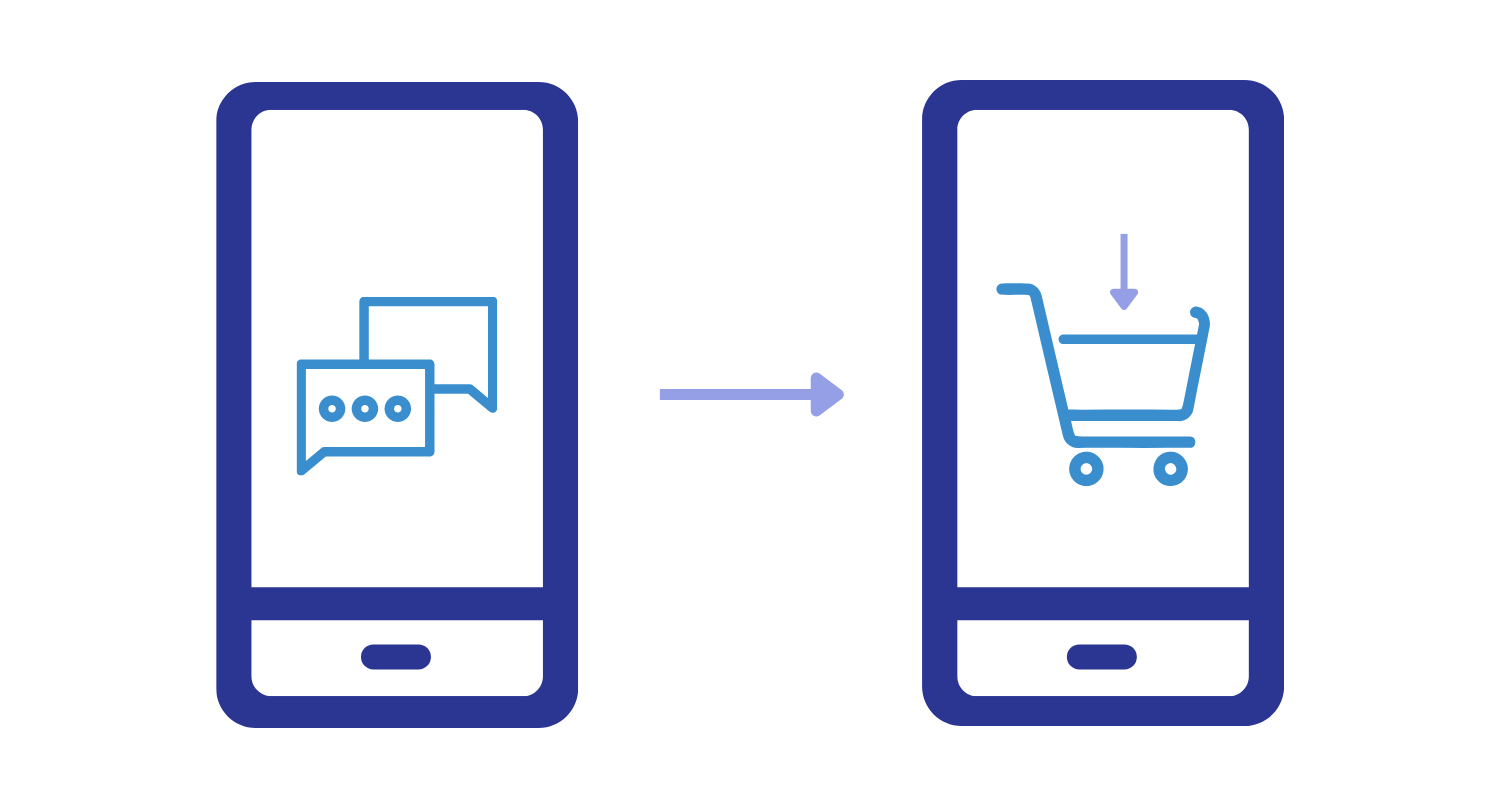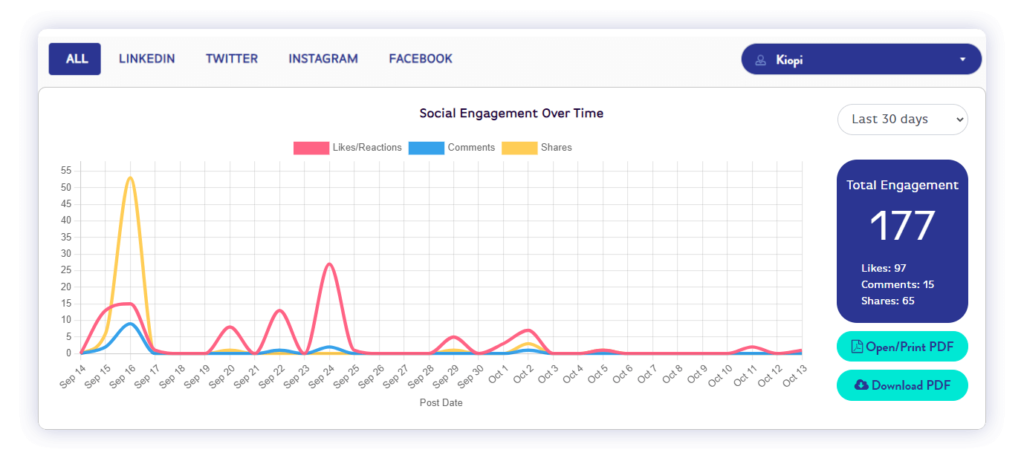How to Become a Content Creator
lauryn preston
Table of Contents
If you ask any young adult what their dream career is, you may hear them say, “Becoming a social media influencer or content creator.” Social media influencers look like they have it all: fame, money, free stuff, and the ability to work whenever they want. If you want this, you have to figure out how to create loads of high-quality, interesting, fun, and trendy digital content.
In today’s online world, content marketing has become a powerful tool for not just career and financial growth but for self-expression, communication, and digital marketing as well.
In this blog post, we’ll dive into how to become a content creator yourself.
Start your 14-day free trial with Kiopi today.
What is Content Creation?

Content creation is the process of generating and sharing valuable, relevant, and engaging material through various digital platforms. This material can take many forms, such as written articles, blog posts, short-form or long-form video content, podcasts, infographics, social media posts, and more.
Social media content creators are the architects of this digital landscape, crafting content that resonates with their target audience and builds a sense of community around shared interests.
The Growing Importance of Content Creators
As the internet continues to evolve and become an integral part of our daily lives, the role of social media content creators has grown exponentially in importance. Here are some key reasons why social media managers, influencers, and content creators are in high demand:
Information and Entertainment
A successful content creator can provide a continuous stream of information, entertainment, and inspiration to a global audience. Whether it’s news updates, DIY tutorials, viral dance routines, or comedy sketches, they keep us engaged.
Influence
A content creator can wield a lot of influence over their followers. Their opinions and recommendations can shape consumer choices, political views, and social attitudes of almost any generation.
Diversity of Voices
Content ideas offer diverse perspectives and voices, allowing for a broader range of stories and experiences to be shared and heard.
Career Opportunities
Creating content has evolved into a viable career path. A successful content creator career can gain monetization through views, ads, brand sponsorships, merchandise, and more.
Community Building
A content creator can foster a specific audience around shared interests. An engaged community provides a sense of belonging and connection in an increasingly digital world.
Becoming a Content Creator
Now that we’ve established the importance of social media influencers and content creators, you might be wondering how to join their ranks and create content of your own. The good news is that anyone with passion, dedication, and a willingness to learn can become a successful content creator.

Why Become a Content Creator?
Before diving into the how-to, let’s explore the why.
Understanding your motivations for becoming a full-time or freelance content creator can help you set clear goals and stay committed to your journey.
Here are some common reasons people choose to publish content as a full-time job:
Passion and Creativity
You have a deep passion for a particular topic or art form and want to share your unique perspective or creations.
Self-Expression
Creating digital content provides a platform for self-expression and creativity. It allows you to tell your story and communicate your ideas to other creators and viewers.
Community Building
You want to build a community of like-minded individuals who share your interests and values.
Career Opportunities
You see the ability to become a content creator as a potential career path, with opportunities for monetization and growth. You believe you can gain enough social media manager contracts to produce a great social media marketing salary.
Benefits of Content Creation
Before we delve into the practical steps of becoming a content creator, let’s explore the numerous benefits this path can offer:
Personal Branding
It helps you build a personal brand and online presence. Your name can become synonymous with your written content, YouTube videos, color palette, art style, fashion style, and overall energy or personality, especially if you follow a social media kit or creative brief examples with branding restrictions.
Skill Development
You’ll acquire a diverse skill set, including writing, editing, graphic design, video production, and social media management.
Connection and Community
Creating high-quality content connects you with an ideal audience of like-minded individuals all across the globe. You can create a loyal community around your content format, success stories, thoughts, and opinions.
Monetization
Successful content creators can generate income through various channels, including ads, brand deals, personalized merchandise, and even sponsored content.
Now that we’ve broken down the “whys” and benefits of creating web content, it’s time to actually produce content on various platforms.
How to Become a Content Creator: Essential Skills for Content Creators
Many members of the older generations say that being a content creator is not a real job. This couldn’t be further from the truth, as content creators wear many “hats.”
Creating high-quality content on social platforms is a lot of work, even if you’re just doing it as a hobby. Additionally, it takes a lot of time, skills, and strategizing to have a solid social media presence, which is why so many brands and businesses hire people specifically to run their social accounts.
Below, we break down the skills you need to have or master in order to become a successful content creator.

Developing Strong Writing Skills
Writing is the backbone of content creation, regardless of whether you’re creating blog posts, social updates, or scripts for video content. You don’t have to be a professional content writer with a college degree to communicate effectively through written content.
Here’s how to enhance your content pillars by improving your writing:
- read widely
- practice regularly
- edit and revise often
- study grammar and style
- seek feedback
If you’re still struggling, we have exciting news! Kiopi users can now reap the benefits of social marketing automation with our new AI social media post generation tool!
Mastering Visual Content Creation
Images, videos, and graphics are vital in capturing your audience’s attention, especially when a brand needs more views on Instagram!
Here’s how to become proficient in this type of content creation:
Learn Basic Design Principles: Familiarize yourself with design fundamentals such as layout, color theory, and typography. People go to college for graphic design for a reason. Making visually appealing content is almost a science.
Use Editing Software: Explore tools like Adobe Photoshop, Illustrator, or free alternatives like Canva and GIMP for image and graphic editing.
Video Production: If you plan to create video content on a YouTube channel or TikTok account, it’s important to master video editing software like Adobe Premiere Pro or Final Cut Pro.
Practice Photography: If photography is your passion, invest time understanding composition, lighting, and camera settings.
Consistency is Key: Maintain a consistent visual style across platforms to reinforce a solid brand identity.
Understanding Search Engines and Keywords
It’s important to have a full understanding of the basics of SEO if you want to be a content creator, including:
Keyword Research: Learn how to conduct keyword research to identify the terms and phrases your audience uses to search for content in your niche.
On-Page SEO: Understand on-page SEO techniques, including content marketing, optimizing titles, meta descriptions, headings, and image alt text.
Quality Content: Create high-quality, informative content that naturally incorporates your chosen keywords.
Link Building: Explore link-building strategies to increase the authority and credibility of your content.
Stay Updated: SEO is ever-evolving as social media channels and search engines change their algorithms. Keep up with industry trends and algorithm updates to maintain your content’s visibility.
There are dozens of affordable online courses available that can teach you SEO basics.
Navigating Social Media Platforms
Social media is a powerful tool for content promotion and audience engagement. Here’s how to navigate the world of social channels effectively:
Platform Proficiency: Choose the social media networks most relevant to your niche and learn how to use them effectively. The most experienced creators know that each app algorithm differs. In other words, what works on TikTok might not work as well on Instagram.
Content Sharing: Craft engaging posts encouraging likes, shares, and comments. Tailor your content to each platform’s audience and algorithm.
Engagement: Interact with your audience regularly by responding to comments, asking questions, and conducting polls or surveys.
Analytics: Utilize platform-specific analytics to track the performance of your content and adjust your strategy accordingly.
Consistency: Maintain a consistent posting schedule using social posting apps to keep your audience engaged and informed.
How to Become a Successful Content Creator
Success as a content creator goes beyond mastering technical skills. It involves building a brand, understanding your audience, and consistently delivering valuable content.
Here’s how to elevate your content creation game:
Choosing Your Subject Matter Expertise
Successful content creators often specialize in a particular niche or subject matter. Consider the following steps when choosing your niche:
Passion and Knowledge: Select a niche you’re passionate about and knowledgeable in.
Market Research: Assess the demand for content in your chosen niche.
Uniqueness: Identify what sets your perspective apart from others in the same niche.
Long-Term Interest: If you enjoy creating content, ensure your niche interests you for the long haul.
Creating Your Own Brand
Building a personal brand is essential for standing out in the crowded world of content creation. Here’s how to establish your brand:
Define Your Brand Identity: Determine your unique voice, style, and values. What do you want your brand to represent?
Consistent Visuals: Maintain a consistent visual identity across your content, including logos, color schemes, and fonts.
Authenticity: Be authentic and genuine in your interactions with your audience. People are drawn to authenticity.
Engagement: Actively engage with your audience on social media and in the comments section of your content.
Storytelling: Craft a compelling personal story or narrative that resonates with your audience.
Showcasing Your Work as a Successful Content Creator
To gain recognition and build an audience as a TikTok, Youtube, or Instagram content creator, you must effectively showcase your work. Consider these strategies:
Portfolio: Create a portfolio, website, or printed materials to showcase your best work. Include samples of your writing, photography, or videos.
Social Media Presence: Maintain an active and engaging presence on social media platforms relevant to your niche.
Guest Posting: Write guest posts or collaborate with other content creators to expand your reach.
Networking: Attend industry events, conferences, and online forums to connect with peers and potential collaborators.
In order to get more traction, you can learn how to create a link post on social media and work with other influencers to promote additional traffic.
Understanding Your Target Audience
Tailoring your content to your target audience is crucial for building a loyal following. Here’s how to understand and connect with your audience:
Audience Research: Use analytics and audience insights to learn more about your followers’ demographics, interests, and behaviors.
Content Relevance: Create content that addresses your audience’s needs, questions, and social or political concerns.
Engage with Feedback: Pay attention to feedback and comments to understand what resonates with your target audience.
Personalize Content: Whenever possible, personalize your content to make your target audience feel valued and heard.
Tools and Digital Platforms for Creating Content
To streamline your content creation process, you’ll need the right tools and platforms. Here are some essential tools for social media managers and content creators:

Graphic Design Software for Visual Content
As a content creator, you should invest in or use Adobe Creative Cloud (Photoshop, Illustrator), Canva, and GIMP for your social media kit and content.
Content Creation With AI Tools
Kiopi’s social media post AI generator is rapidly emerging as a key tool for aspiring content creators. Among the best AI tools for digital marketing available, it streamlines content creation and enhances its quality.
As an AI caption generator, it offers unique and engaging captions crucial for capturing audience’s attention in the crowded digital landscape.
SEO Tools to Boost Your Content's Visibility
For the digital marketing aspect of content creation, you will also need a few SEO tools under your belt, such as SEMrush, Ahrefs, and/or Moz.
Content Calendar for an Organized Posting Schedule
It’s hard to keep track of all your content on multiple platforms. You have your graphics and photography on Instagram, your short-form videos on TikTok, your long-form videos on YouTube, your statuses on Twitter and Facebook, and other platforms.
You will need a content calendar and social media posting service, like Kiopi, in order to keep up and stay on track.
Social Media Management Platforms and Tools
Not only does Kiopi have social post-scheduling and social media content calendar features, but it also has other features, such as social media campaign management, link shorteners, social planning, social analytic trackers, and more.
Kiopi is one of the best and most affordable content-creation tools on the market.
How Content Creators Promote Content on Digital Platforms
Creating exceptional content is only half the battle; promoting it effectively is equally important. But effective digital marketing is no easy feat, especially without strategy and research.
Leveraging Social Media Platforms: Tips for Sharing Your Social Media Content
Social media is a powerful tool for content promotion. Use these tips to maximize your reach:
Timing: Post when your target audience is most active. Use platform insights to identify peak engagement times. Kiopi can help you determine the best times to post on all of your social accounts.
Visual Appeal: Use eye-catching visuals and multimedia elements to accompany your posts.
Engagement: Interact with your audience through comments, likes, and shares. Respond to comments promptly.
Hashtags: Use relevant and trendy hashtags to increase the discoverability of your content.
Collaborations: Collaborate with other influencers in your niche for cross-promotion.
Social Media Advertising: Consider investing in targeted paid advertising, such as a sponsored post, to drive traffic.
Collaborations and Networking: Expanding Your Reach With Influencer Marketing
Collaborations with other content creators can significantly expand your audience. Here’s how to approach influencer marketing:
Identify Potential Collaborators: Look for content creators with a similar audience or complementary niche.
Reach Out Professionally: Craft a personalized outreach message to propose collaboration ideas to your favorite creators and potential clients.
Mutual Benefit: Highlight how the collaboration benefits both parties and their audiences.
Plan Together: Collaborate on content ideas, promotion strategies, and scheduling.
Cross-Promotion: Promote the collaboration across both creators’ platforms for maximum exposure.
Measure Results: Analyze the impact of collaborations on your target audience growth and engagement.
See why social media managers choose Kiopi as an addition to influencer marketing tools.
Measuring the Success of the Content Strategy
To continuously improve your content strategy, you must measure the success of your social backlinking efforts by tracking relevant metrics.
Tracking Metrics of Content Created: Views, Engagement, and Conversions
Views: Monitor the number of views your content receives to gauge its reach.
Engagement: Track likes, comments, shares, and other forms of interaction with your content.
Conversions: Measure the number of actions taken as a result of your content, such as clicks on links or sign-ups.
Audience Growth: Keep an eye on the growth of your followers or subscribers over time.
Audience Demographics: Understand the demographics of your target audience to tailor your content effectively.
Retention: Analyze how well your content retains viewers or readers over time.
Revenue: If applicable, track the revenue generated through your content, including ad revenue, affiliate sales, or product sales.
Feedback: Consider gathering feedback from your target audience through surveys or comments to gain insights into what’s working and what needs improvement.
The Role of Analytics in Refining Your Content Strategy
Tools that track analytics are crucial for evaluating the success of your content strategies. Here are some popular analytics platforms and their key features:
Google Analytics: Provides comprehensive website and traffic analytics, including target audience demographics, behavior, and conversion tracking.
YouTube Analytics: Offers insights into video performance, audience retention, and demographic data for YouTube content creators.
Social Media Insights: Each social media platform provides its own set of analytics, including engagement metrics, follower demographics, and post performance.
Email Marketing Analytics: Tools like Mailchimp or ConvertKit offer email campaign metrics, such as open rates, click-through rates, and subscriber growth.
SEO Analytics: SEO tools like Ahrefs and SEMrush provide data on keyword rankings, backlinks, and website health.
By regularly analyzing these metrics, you can make data-driven decisions to refine your content, improve audience engagement, and achieve your content creation goals.
Many Successful Content Creators Use Social Media Management Tools, Like Kiopi!
Becoming a digital creator is an exciting journey that allows you to share your passion, creativity, and expertise with the world. From developing essential skills to building a personal brand and effectively promoting your content, the team at Kiopi hopes to give you the knowledge and the tools you need to get started on your content creator journey.
In order to get a taste of Kiopi’s content scheduling, planning, and campaign management tools, start your 14-day free trial today, then check out our monthly plans.
